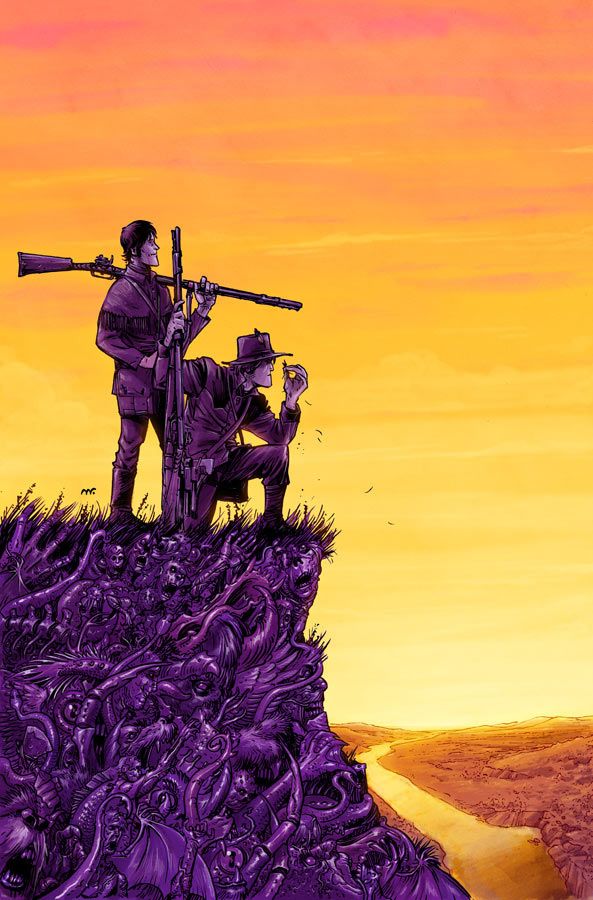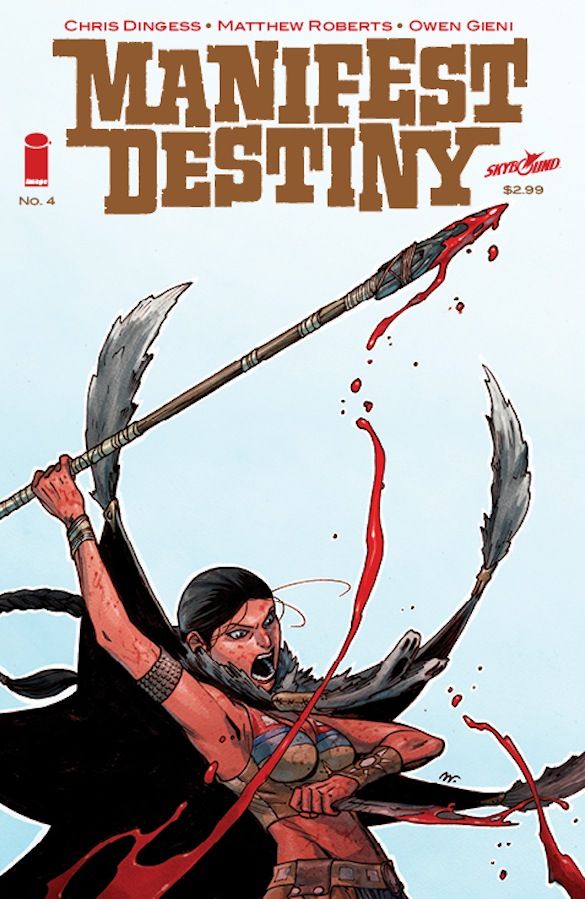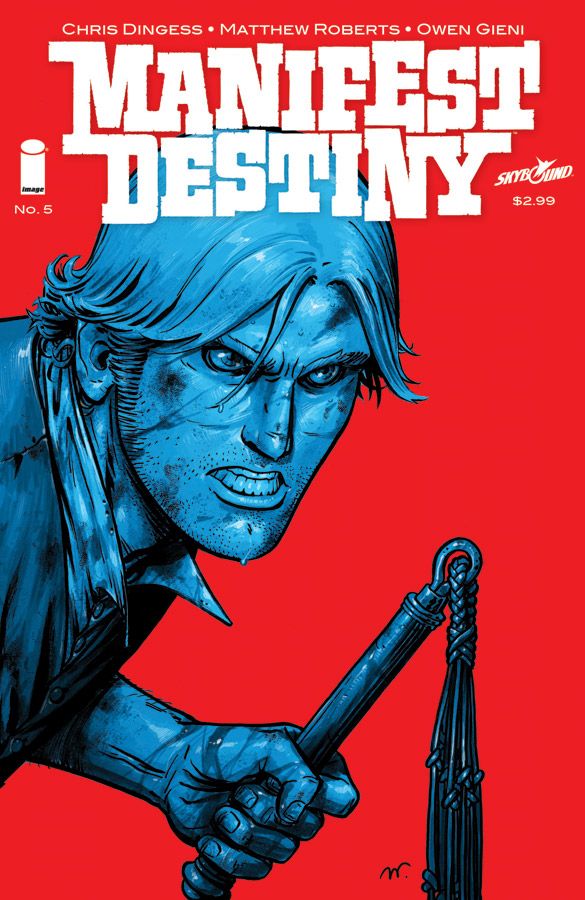In 1804, President Thomas Jefferson commissioned a team of Army men to trek from St. Louis, MO to the Pacific Coast on a mission of exploration. Led by Meriwether Lewis and William Clark, the group's objective was to explore new territory before competing powers attempted to claim the land, discover the most efficient routes and waterways across the country and study the plant and animal life of the various geographic regions -- that is, if you believe the history books.
But what if the famous expedition was actually a covert mission to clear the country of dangerous monsters and mythical beasts roaming the open plains and thickly-wooded areas? In "Manifest Destiny," Chris Dingess and Matthew Roberts revise history, pitting Lewis and Clark against wild creatures, crazy conspiracies and the devil himself.
With the first two issues already on shelves courtesy of Image Comics and Skybound, series writer Dingess and artist Roberts spoke with CBR News about their take on reimagining a classic adventure tale.
CBR News: Chris, what kind of men are the Lewis and Clark of your story? What makes two explorers say "yes" to clearing the continent of monsters?
Chris Dingess: In this book, Lewis and Clark are men of their time, which means they can be hard and have rigid morals regarding certain things -- but then they own slaves and treat Native Americans in a questionable/horrible fashion. They are haunted by these things as well as decisions made on this journey. We wanted to give the characters multiple dimensions. I see this version of Lewis and Clark flawed. They're brave and heroic in some circumstances, and weak and cowardly the next.

Are the monsters cryptid creatures that we will be familiar with, or did you invent new ones? I noticed that the man-horse we meet in issue #1 appears to be part buffalo and reminded me of Native American legends about skin walkers. Did early American folklore influence you at all?
Dingess: If this book keeps going, we plan to do a whole slew of creatures. Some may be cryptids, possibly from whatever region Lewis and Clark happen to be traveling through, or they could be a version of a mythological beast. Or they could come straight from our minds. As long as Matt keeps churning out the astounding, beautiful, and weird stuff, there's kind of an endless supply of creepy crap that can come at our heroes.

The narrative in the first issue is partially created by Lewis' journal entries. Will he continue to provide personal insight into the story as it unfolds?
Dingess: Absolutely. I think the journal serves as a good entry point for stories. It provides the story with a narrator.

Matthew, what kind of research did you do to make your art reasonably historically accurate?
Matthew Roberts: I bought a few books that specifically cover clothing and equipment on the expedition, and also a few on animal anatomy. A lot of it, though -- images of the Missouri River, recreations of the boats, animals and stuff like flint locks firing -- was just scoured off the internet.

I want to talk a little bit about the comic's unique paneling. They build the tension and pacing of the story really well. What was important to you when designing the layout?
Roberts: A lot of time, Chris sets the stage for me with his panel descriptions. He can be very specific, but his sensibilities gel well with mine, so it's not stifling. I like to keep the borders and layouts simple. I'll get fancy now and then, but I usually tend to treat it like a photo album and kind of peg things around the main beat on a page.

So it seems there's a little bit of government conspiracy in the story. What are some of your favorite conspiracy theories?
Roberts: I'm a jerkwad, party-pooper realist with that kind of stuff. I tend to think most conspiracy theories give people too much credit as far as being masterminds goes. Playing around with "what ifs" is usually fun, though. Anything involving clandestine groups like Freemasons or The Knights Templar is cool to imagine. It's cloudy enough that you can plug some zany stuff into any story as far as what makes those people tick. Specific tragedies like 9/11 theories or the Kennedy assassination usually just bore me. There might be more to those stories, but the stories ended the same and I just don't care how convoluted it was. Unless it was the Knights Templar who killed JFK. Like, whoa.
Dingess: As far as conspiracy theories go, I don't know if I have a favorite. While I'm fascinated by people's obsessions with them, I think most of the time they are misspent, sad distractions from real problems -- wait. That sounds like a conspiracy, doesn't it?

Already we've met Lewis and Clark, and President Jackson is an important ingredient in the story. Are there any other historical figures set to appear?Roberts: That whole era was nutso for American myth making. Tall Tales and folk heroes and loads of men and women taking on the wilderness and the unknown and then not dying.I've talked to Chris about specific people and what his plans are, but I don't ask too many questions. I like being surprised by the issues as Chris sends in.
Dingess: If they do pop up, it would probably be briefly in the past. For the time being, I think we want to keep focused on what's happening on the trail.
Who do you think actually would've been more likely to orchestrate a monster hunting conspiracy: Jackson or Roosevelt?
Roberts: I just imagine Jackson as a grump with an itchy dueling finger. Roosevelt, as a character in my head, seems much more likely to get a monster hunting party started.
Dingess: This is a ridiculous question and, therefore, my favorite. I think Teddy Roosevelt would be into the monster hunting party. But it wouldn't be a conspiracy. He seems far too loud for that. He would try and drum up as much support as he could. He'd make it a point of national pride.
"Manifest Destiny" #1 and 2 are available in stores and online. The ongoing series will continue monthly.




